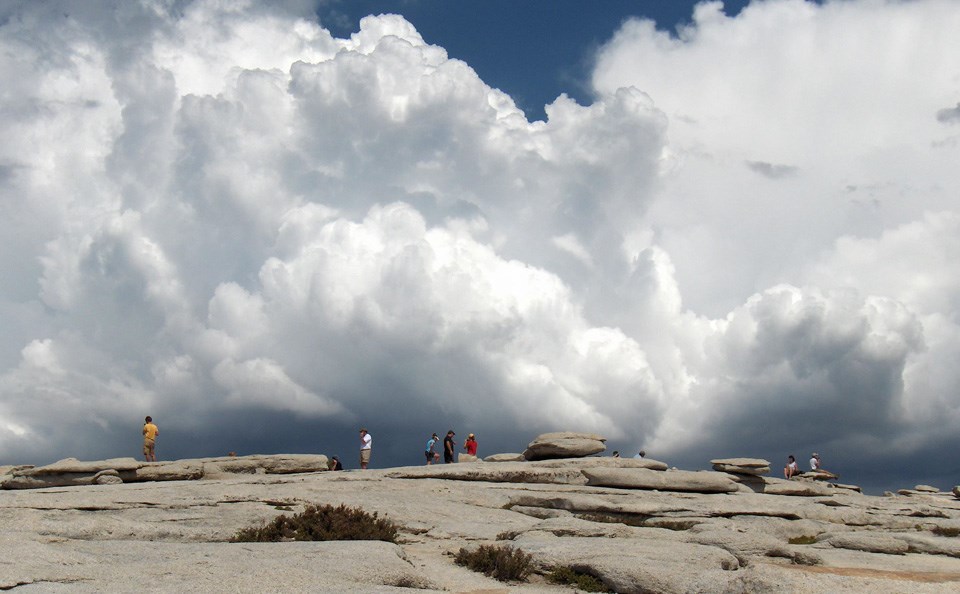How To Avoid Getting Struck By LightningThunderstorms bring lightning, a powerful force that can result in death. In July 1985, lightning at Half Dome killed two people and injured three others (two of them, critically). Though most common June through September, thunderstorms can happen any time of the year. During July through September, the North American monsoonal weather pattern can cause moisture from the Gulf of California to flow into the Sierra Nevada, resulting in thunderstorms. Ultimately, there is no safe shelter outside. The only safe place is in a substantial building or hard topped vehicle. Plan Ahead

Sharon Miyako During a ThunderstormOnce you are on the trail or out in the open, maintain situational awareness. Watch for afternoon build-up of cumulus clouds. At the first sign of an impending storm, such as towering cumuliform clouds, darkening skies, increased wind, or thunder and lightning, get to lower elevations and get inside a substantial building or hard-topped metal vehicle. If you hear rumble of thunder, a thunderstorm is within 10 miles (16 km). Do not wait; this is a warning you that you need to get to a safe place immediately. Remember: When Thunder Roars, Go Indoors! Avoiding a thunderstorm before one arrives it the best way to stay safe. If you're unable to avoid a thunderstorm, here are some additional tips.
If in Yosemite's wilderness, when thunderstorms are possible, plan to hike or climb above the treeline or along the rim in the morning. Plan to summit peaks prior to noon. Avoid the most dangerous places and activities. Even if a thunderstorm is approaching from a long distance, descend as far and fast as you can to minimize the risk of being struck. The National Weather Service has more risk management information for hikers and backpackers [5 MB PDF]. In case of an emergency, remember that a lightning victim is safe to touch and, if trained, you should attempt to resuscitate a person who is not breathing or has no pulse as soon as possible. |
Last updated: January 21, 2025
